Rock Ridges#rockridgessweater |
|
 |
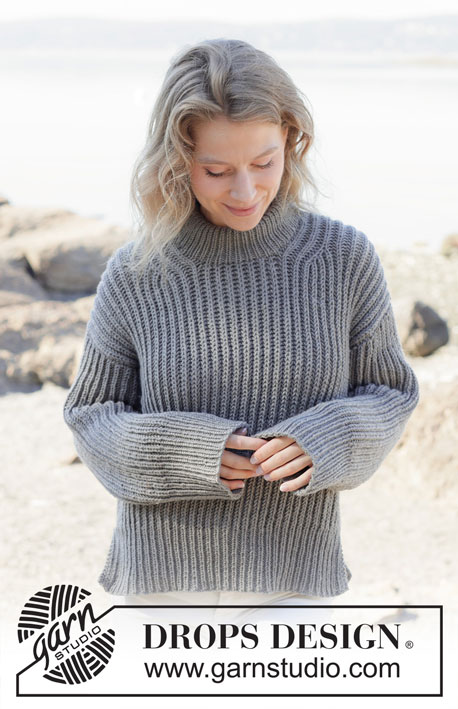 |
Knitted jumper in DROPS Big Merino. The piece is worked top down with European/diagonal shoulders, English rib and split in sides. Sizes S - XXXL.
DROPS 252-12 |
|
|
------------------------------------------------------- EXPLANATIONS FOR THE PATTERN: ------------------------------------------------------- GARTER STITCH (worked back and forth): Knit all rows, from both the right and wrong side. 1 ridge in height = knit 2 rows. ENGLISH RIB back and forth (for front and back pieces): ROW 1 (wrong side): Work 1 garter stitch, * make 1 yarn over, slip 1 stitch purl-wise, knit 1 *, work from *-* until there are 2 stitches left and finish with 1 yarn over, slip 1 stitch purl-wise, 1 garter stitch. ROW 2 (right side): 1 stitch in garter stitch, * knit together the yarn over and slipped stitch, make 1 yarn over, slip 1 stitch purl-wise *, work from *-* until there is 1 yarn over and 2 stitches left, knit the yarn over and slipped stitch together, 1 garter stitch. ROW 3 (wrong side): 1 garter stitch, * make 1 yarn over, slip 1 stitch purl-wise, knit together the yarn over and slipped stitch *, work from *-* until there are 2 stitches left, make 1 yarn over, slip 1 stitch purl-wise, 1 garter stitch. Repeat rows 2 and 3 onwards. ENGLISH RIB in the round ( for body and sleeves): ROUND 1: * Make 1 yarn over, slip 1 stitch purl-wise, knit together the yarn over and slipped stitch *, repeat from *-* to end of round. ROUND 2: * Purl together the yarn over and slipped stitch, make 1 yarn over, slip 1 stitch purl-wise *, repeat from *-* to end of round. ROUND 3: * Make 1 yarn over, slip 1 stitch purl-wise, knit together the yarn over and slipped stitch *, repeat from *-* to end of round. Repeat rounds 2 and 3 onwards. INCREASE TIP: Work 3 stitches in 1 knitted stitch as follows: Knit together the yarn over and stitch but do not slip them from the needle, make 1 yarn over and knit together the yarn over and stitch one more time, slip them off the left needle = 3 stitches. DECREASE TIP : Decrease under the sleeves in the stitch closest to the purled marker-stitch. All decreases are worked on a round where the yarn overs and knitted stitches are knitted together. DECREASE 2 STITCHES TOWARDS THE LEFT (start straight after the purled marker-stitch): Slip the first knitted stitch and yarn-over onto the right needle as if to knit together, knit the next 2 stitches together (1 purled stitch + knitted stitch + yarn over), pass the slipped yarn-over and knitted stitch over the knitted together stitches (= 2 stitches decreased). DECREASE 2 STITCHES TOWARDS THE RIGHT (start 3 stitches + 2 yarn overs before the purled marker-stitch): Slip the first knitted stitch and yarn over onto the right needle as if to knit together, purl 1, pass the slipped yarn-over and knitted stitch over the purled stitch, slip the stitch back onto the left needle, pass the stitch and yarn-over over the replaced stitch, slip the remaining stitch onto the right needle (= 2 stitches decreased). ------------------------------------------------------- START THE PIECE HERE: ------------------------------------------------------- JUMPER – SHORT OVERVIEW OF THE PIECE: The pattern uses both long and short needles; start with the length which fits the number of stitches and change when necessary. The piece is started back and forth with circular needle, casting on stitches at the back of the neck and working the back piece top down, while increasing stitches on each side for the shoulders, which become slightly diagonal. The back piece is worked as far as the armholes. The back piece waits, while the front piece is worked in 2 sections, knitting up stitches along the left back shoulder, working pattern and increasing for the neckline. This is repeated on the right shoulder. The 2 front sections are joined when the neckline is finished and worked until the armholes are finished. The front and back pieces are joined on the same circular needle and the body worked in the round, then divided for the split in each side and the front and back pieces finished separately, back and forth Stitches are knitted up around the armholes for the sleeves, which are started back and forth for the sleeve cap, then finished in the round. Stitches are knitted up around the neckline and the neck worked in the round, then folded double to the inside. The jumper is worked in English rib. BACK PIECE: Cast on 27-27-27-27-29-31 stitches with circular needle size 5.5 mm and DROPS Big Merino. Work 1 row of ENGLISH RIB – read description above, this is a row worked from the wrong side. Now work as follows from the right side: Work 1 GARTER STITCH – read description above, 4 English rib stitches, INCREASE 2 stitches in the next stitch (1 knitted stitch which is worked together with the yarn over) - read INCREASE TIP, work English rib until there are 6 stitches left, INCREASE 2 stitches in the next stitch (1 knitted stitch which is worked together with the yarn over), work 4 English rib stitches and 1 garter stitch. Continue the English rib and increase like this every 2nd row from the right side (i.e., every 4th row and 3 rows without increases in between) a total of 10-11-13-14-15-16 times (4 increased stitches on each increase-row). The increased stitches are worked into the English rib. After the final increase there are 67-71-79-83-89-95 stitches. Insert 1 marker outermost on one side. The piece is now measured from here! Continue the English rib back and forth until the piece measures 14-15-15-16-17-17 cm from the marker. Cut the strand, place the stitches on a stitch holder and work the front piece. LEFT FRONT PIECE: Find the left shoulder on the back piece as follows: Lay the piece flat, right side up, with the stitch holder towards you; left side of piece = left shoulder. Starting from the right side, knit up 21-23-27-29-31-33 stitches inside the garter stitches, starting from the neck and working towards the shoulder. All measurements are taken from this picked-up row. Work English rib with 1 garter stitch on each side for 7 cm. Now increase stitches towards the neck at the beginning of every 6th row, increasing after the first 5 stitches (1 garter stitch and 4 English rib stitches) – remember INCREASE TIP. Increase 2 stitches every 6th row 3 times = 27-29-33-35-37-39 stitches. Work back from the wrong side after the final increase. Cut the strand, place the stitches on a stitch holder and work the right front piece. RIGHT FRONT PIECE: Starting from the right side, knit up 21-23-27-29-31-33 stitches along the right back shoulder, inside the garter stitches, starting from the shoulder and working towards the neck. All measurements are taken from this picked-up row. Work English rib with 1 garter stitch on each side for 7 cm. Now increase stitches towards the neck at the end of every 6th row, increasing before the last 5 stitches – remember INCREASE TIP. Increase 2 stitches 3 times = 27-29-33-35-37-39 stitches. Work back from the wrong side after the final increase. Work the next row from the right side as follows: Work English rib as before across the 27-29-33-35-37-39 stitches on the right front piece, cast on 13-13-13-13-15-17 stitches for the neckline, work English rib as before across the 27-29-33-35-37-39 stitches on the left front piece = 67-71-79-83-89-95 stitches. Continue English rib back and forth, with 1 garter stitch on each side until the piece measures 24-25-27-28-29-31 cm. The front and back pieces are now joined for the body. BODY: Work from the right side across the 67-71-79-83-89-95 stitches from the front piece, cast on 3-3-3-7-7-11 stitches (= side), work as before across the 67-71-79-83-89-95 stitches on the back piece, cast on 3-3-3-7-7-11 stitches = 140-148-164-180-192-212 stitches. Cut the strand and begin the next round in the middle of the cast-on stitches in one side. Continue with ENGLISH RIB in the round – read explanation above. NOTE! The cast-on stitches under each sleeve are worked without yarn overs on the first round. Work until the piece measures 48-50-52-54-56-58 cm, from the top of the shoulder. Now work the next round (making sure it is a round where the yarn overs are knitted together with the stitches) as follows: Cast off the middle stitch in the 3-3-3-7-7-11 new stitches (i.e., the first stitch on the round), work 2 garter stitches, then work the next 65-69-77-85-91-101 stitches as follows: knit together the yarn over and knitted stitch as normal then make 1 yarn over and purl the next stitch (2 English rib stitches become 1 knitted and 2 purled stitches), work 2 garter stitches, cast off the next stitch (middle stitch of the 3-3-3-7-7-11 new stitches), work 2 garter stitches, then work the next 65-69-77-85-91-101 stitches as follows: knit together the yarn over and knitted stitch as normal then make 1 yarn over and purl the next stitch (2 English rib stitches become 1 knitted and 2 purled stitches), work 2 garter stitches = 101-107-119-131-140-155 stitches. Turn and continue the back piece as follows: Change to circular needle size 4 mm and work from the wrong side as follows (NB! Work the yarn overs twisted to avoid holes): Pick up 1 stitch in the stitch cast off in the side, and work this stitch in garter stitch, 2 garter stitches, * purl 1, knit 2 *, repeat from *-*, finishing with purl 1, 2 garter stitches, and pick up 1 stitch in the stitch cast off (this stitch is worked in garter stitch), AT THE SAME TIME on row 1, increase 1 stitch every 2nd time you knit 2. These stitches are purled from the right side, i.e., you knit 1 and alternately purl 2/3 stitches (from the right side). Continue this rib for 10 cm. Cast off. FRONT PIECE: Place the front piece stitches on circular needle size 4 mm. Starting from the wrong side, and pick up 1 stitch in the stitch cast off in the side, and work this stitch in garter stitch, work 2 garter stitches, * purl 1, knit 2 *, repeat from *-*, finishing with purl 1, 2 garter stitches, and pick up 1 stitch in the stitch cast off (this stitch is worked in garter stitch), AT THE SAME TIME on row 1, increase 1 stitch every 2nd purled section. These stitches are purled from the right side, i.e., knit 1 and alternately purl 2/3 stitches (from the right side). Continue this rib for 10 cm. Cast off. The jumper measures approx. 58-60-62-64-66-68 cm, from the top of the shoulder. SLEEVES: Using circular needle size 5.5 mm, knit up from the right side 55-57-59-63-65-69 stitches around the armhole. Work English rib back and forth, with 1 garter stitch on each side for 1-1-1-3-3-4 cm. Now join the sleeve, using short circular needle/double pointed needles size 5.5 mm, and continue in the round. When the sleeve is joined, knit together the garter stitches on each side to 1 stitch, which is continued as a purled stitch in the English rib. Insert 1 marker-thread in this stitch (mid-under the sleeve) = 54-56-58-62-64-68 stitches. Allow the marker-thread to follow this purled stitch onwards. The sleeve is now measured from here. Start at the marker-thread and continue the English rib in the round for 6-6-6-7-8-8 cm. Now decrease 4 stitches under the sleeve – read DECREASE TIP = 50-52-54-58-60-64 stitches. Work until the sleeve measures 40-40-38-38-36-35 cm. Approx. 10 cm left to finished length; try the jumper on and work to desired length before the rib, making sure the next round is a round where yarn overs and stitches are knitted together. Work the as follows: Knit together the yarn over and knitted stitch as normal then make 1 yarn over and purl the next stitch (2 English rib stitches become 1 knitted and 2 purled stitches) = 75-78-81-87-90-96 stitches. Change to double pointed needles size 4 mm. Work rib (knit 1, purl 2) for 10 cm NB! On the first round, work the yarn overs twisted to avoid holes. Cast off a little loosely. The sleeve measures approx. 50-50-48-48-46-45 cm from the join. NECK: Start on one shoulder-line and knit up from the right side, inside 1 edge stitch, approx. 84 to 92 stitches using short circular needle size 4 mm. The stitch count should be divisible by 2. NOTE! Make sure to knit up 1 stitch in each knitted and each purled stitch. Work rib in the round (knit 1, purl 1), making sure the rib matches the English rib stitches, for 11 cm. Cast off. Fold the neck double to the inside and fasten down to give a double neck. |
|
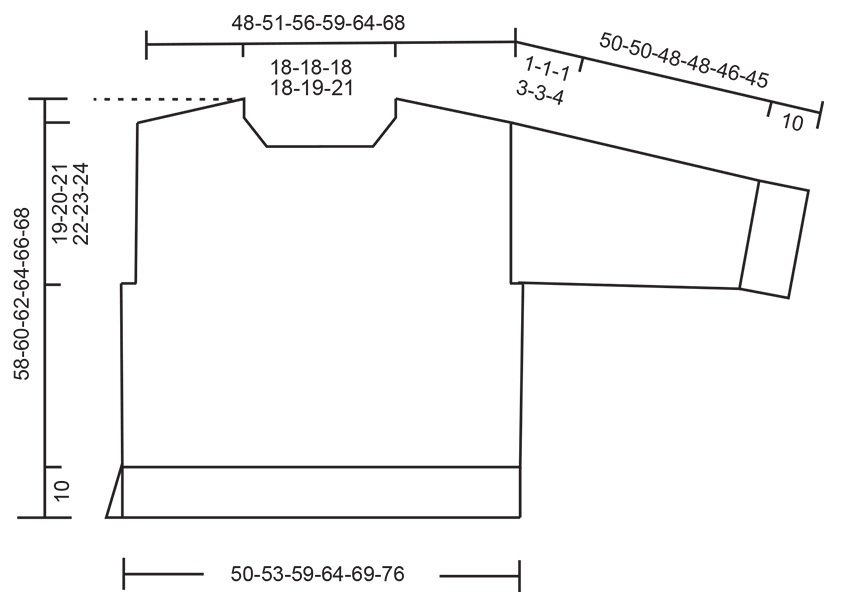 |
|
Have you finished this pattern?Tag your pictures with #dropspattern #rockridgessweater or submit them to the #dropsfan gallery. Do you need help with this pattern?You'll find 27 tutorial videos, a Comments/Questions area and more by visiting the pattern on garnstudio.com. © 1982-2025 DROPS Design A/S. We reserve all rights. This document, including all its sub-sections, has copyrights. Read more about what you can do with our patterns at the bottom of each pattern on our site. |
|







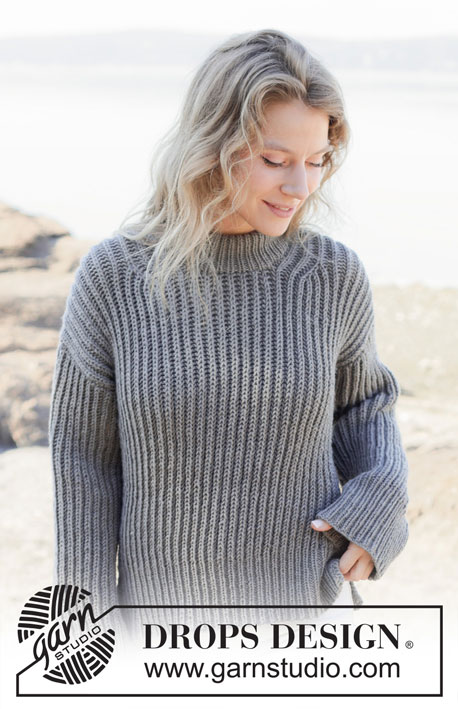
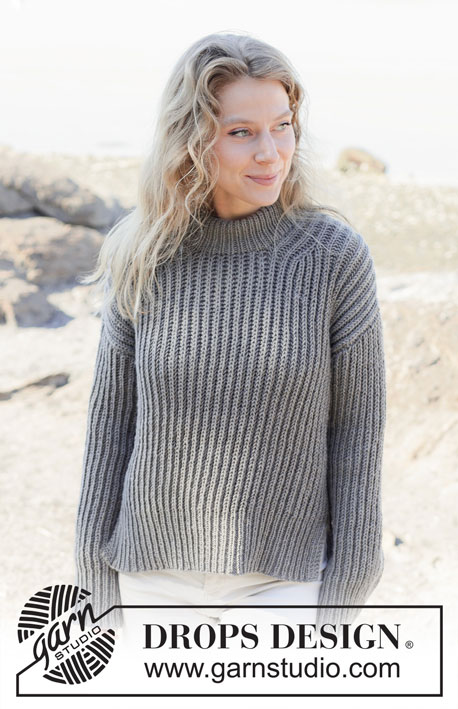


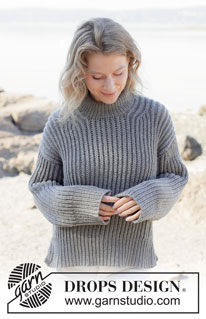
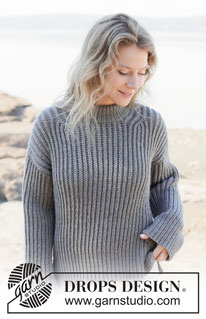
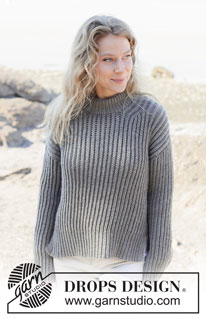
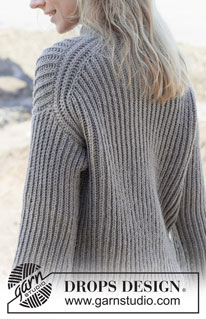
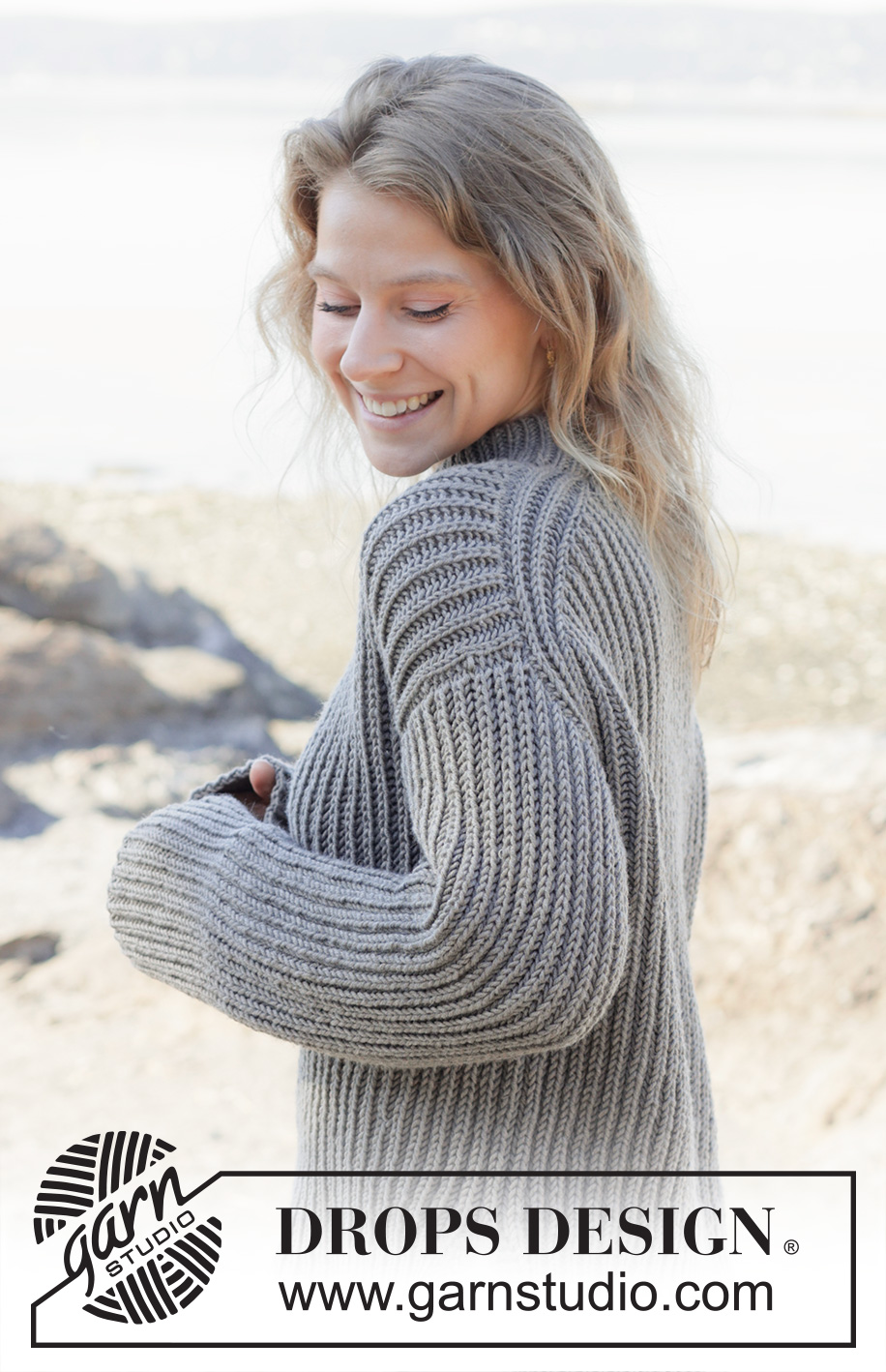
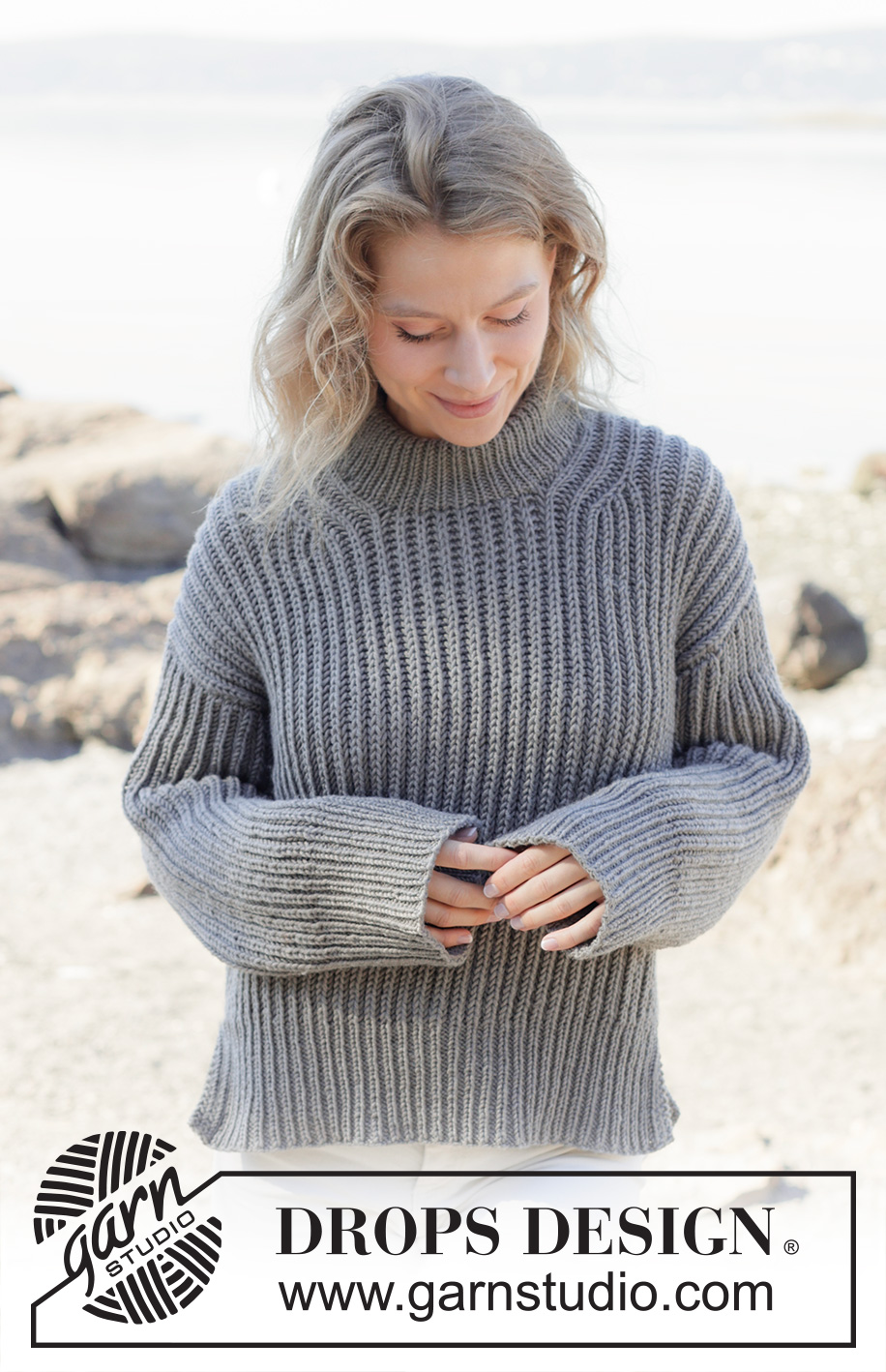
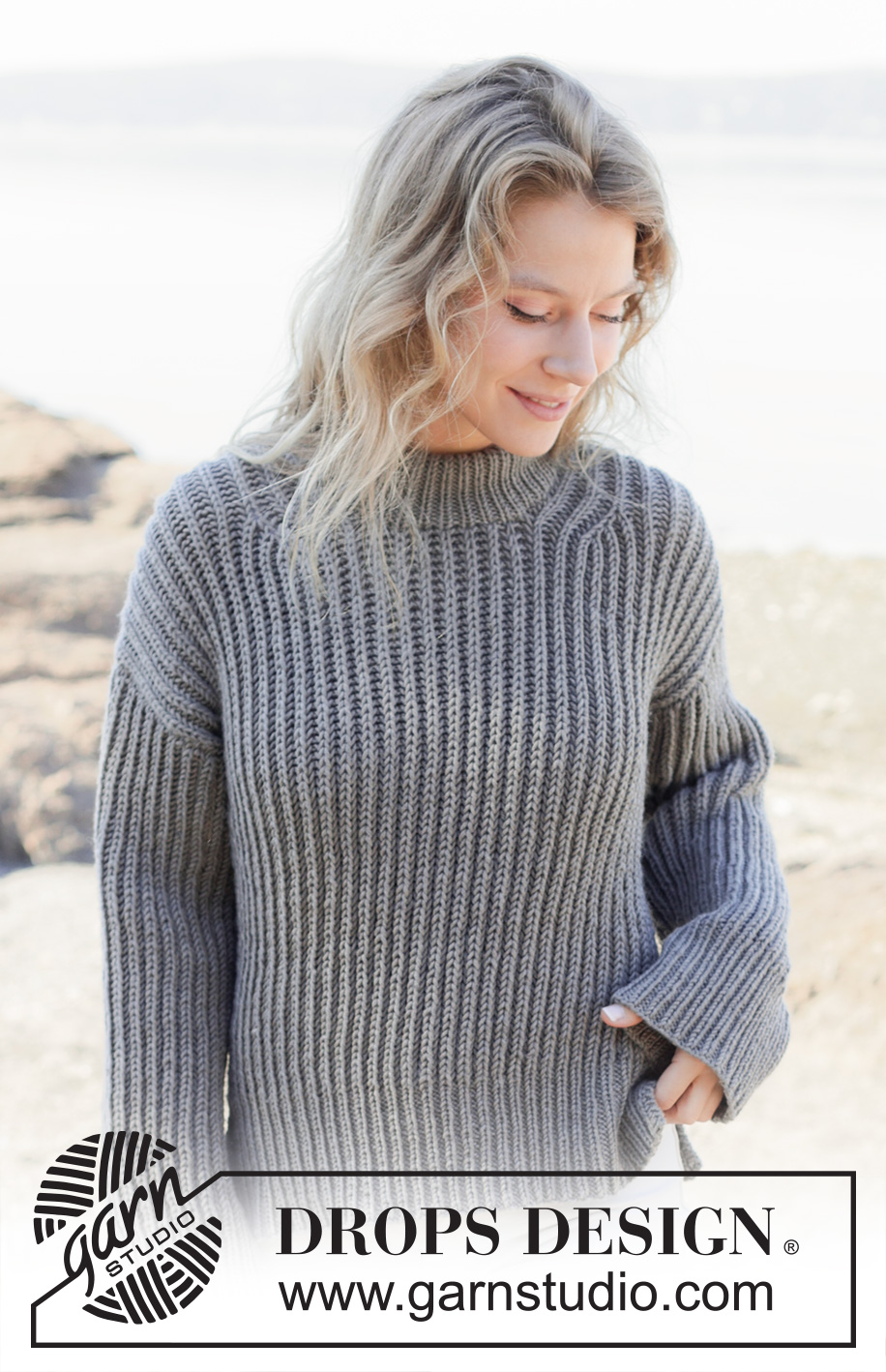




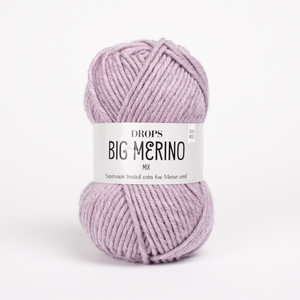
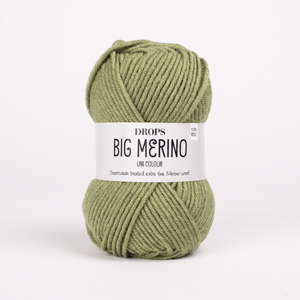

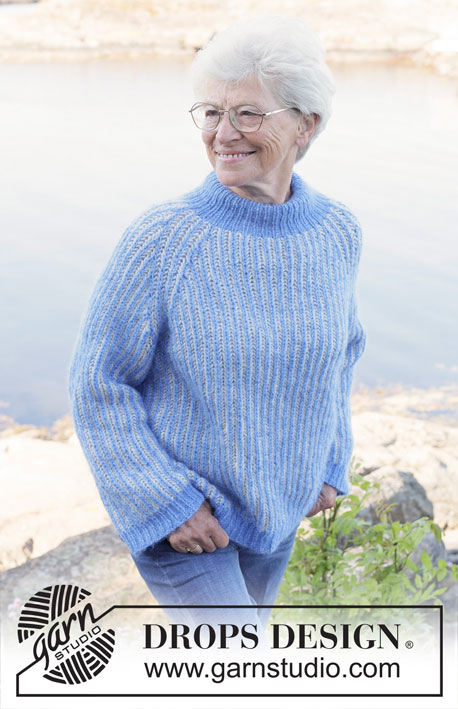





























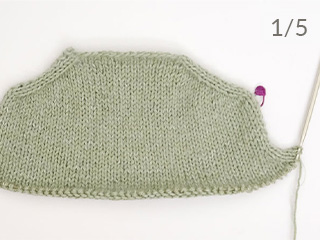
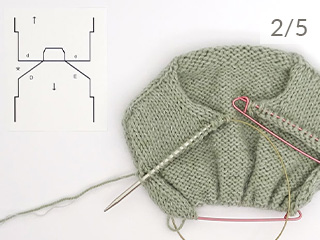

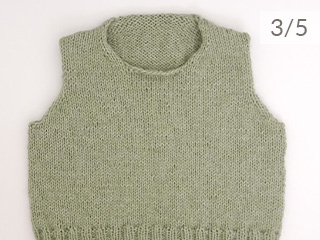
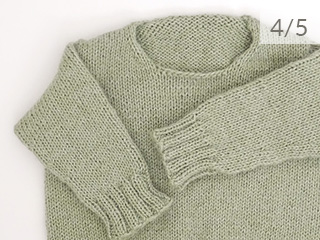
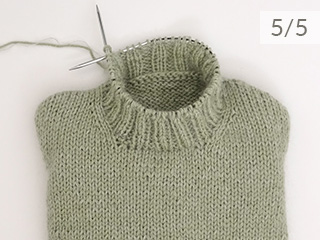
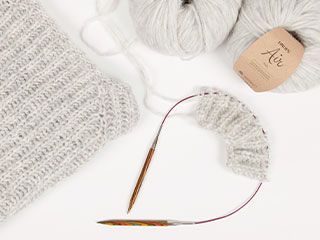

















Post a comment to pattern DROPS 252-12
We would love to hear what you have to say about this pattern!
If you want to leave a question, please make sure you select the correct category in the form below, to speed up the answering process. Required fields are marked *.